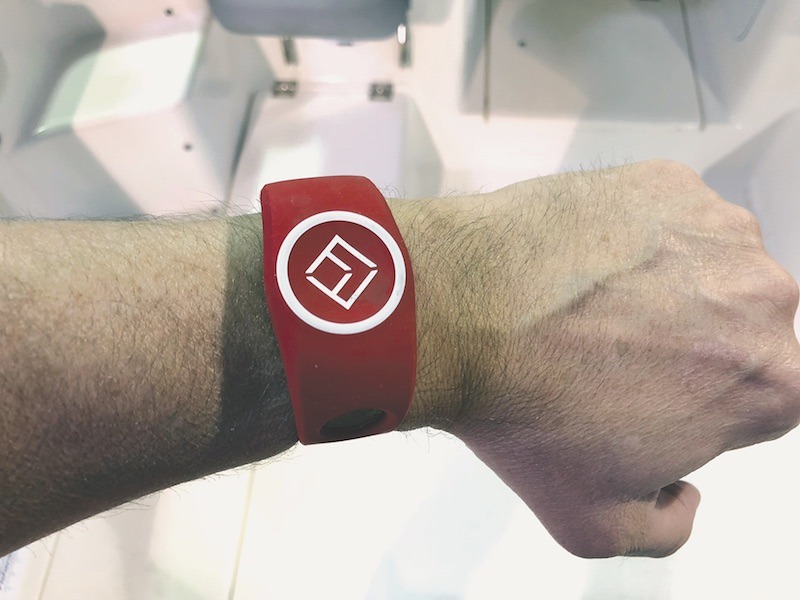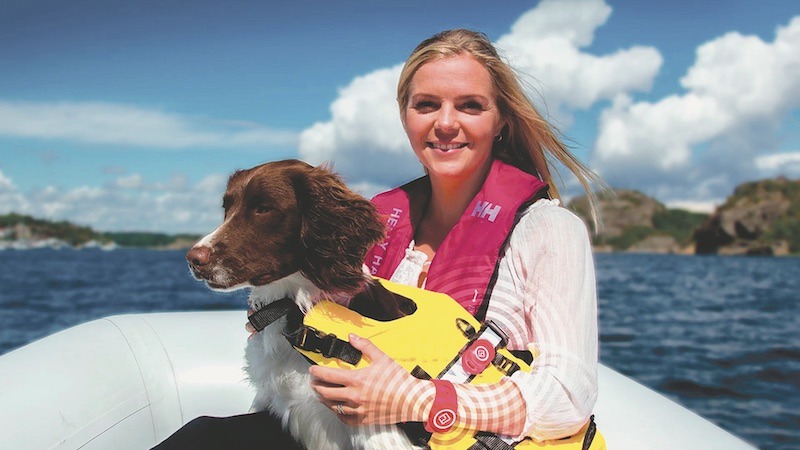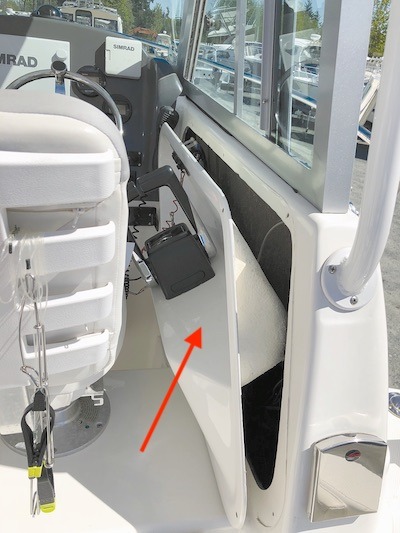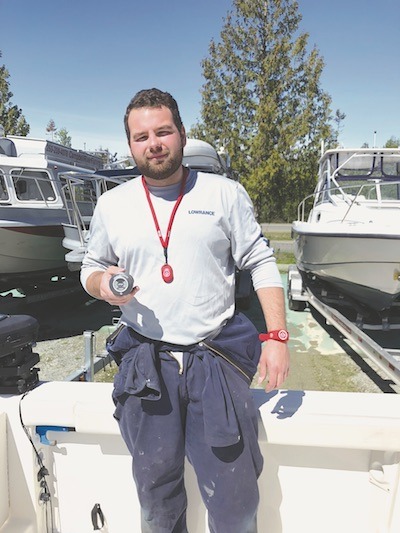
I love to fish alone. Don’t get me wrong, I always enjoy family and friends on the water but packing up the boat and heading out somewhere remote is the best way for me to hit the reset button. Whether I explore new areas or revisit familiar spots, I always come back a better fisherman. I don’t completely change things when fishing alone; sometimes I downsize my standard 10’6” rods to 9’—I find that helps get the fish just a bit closer to the boat for netting or gaffing. And depending where I am, I sometimes like to throw a shallow line off the back on a Deep Six with a lonely lure from the depths of my tacklebox that doesn’t usually get attention, just to see what happens. Last summer, my father asked me, “How do you keep safe from not falling off the boat? Do you tie a secured rope around your waist like a tether?” My knee-jerk chuckles faded as I grimly imagined myself being dragged behind the outboards with the throttle wide open. It got me to thinking, yeah, I need to have a better strategy.
Guilty as charged. I don’t attach myself to the kill switch cord from the throttle often enough—it’s too short and it would simply get tangled up everywhere. It’s inconvenient. Of course, I do wear a lifejacket and keep a handheld waterproof VHF attached to it. But still, the thought of my boat merrily continuing on its way without me has been top of mind over the winter, at least until now.
If you haven’t had a look at Fell Marine’s MOB+, I strongly suggest you do. I think it’s one of the best safety devices I’ve ever come across. Simply put, it’s a wireless cut-off switch that you can pair with up to four fobs. The first fob you pair is for the pilot and it will exclusively shut the engines off if submerged more than 4 inches or if it is out of range (approximately 50 feet in our test, which matches up to the user manual). The remaining three are for passengers, which will only sound an alarm under the same conditions (out of range/underwater) but will not kill the engines. That’s smart for quick retrieval in a man overboard (MOB) situation. Each fob can be inserted into a stylish rubberized xBand wristband accessory, a simple lanyard, or a clip that’s very useful for attaching to a pet’s collar or a PFD on a child, the xTAG. The basepack comes with the wireless kill switch xHUB which needs to be installed and one fob; you’ll likely want the xBAND or the xTAG lanyard as well—someone is bound to come with you at some point. My dogs like to swim and chase birds, which has made for trouble at sea on more than one occasion. “Ummm, where’s Bailey? Oh, there she is…about a mile back swimming after those ducks.”
The basepack comes with the wireless kill switch xHUB which needs to be installed and one fob; you’ll likely want the xBAND or the xTAG lanyard as well—someone is bound to come with you at some point. My dogs like to swim and chase birds, which has made for trouble at sea on more than one occasion. “Ummm, where’s Bailey? Oh, there she is…about a mile back swimming after those ducks.”
The documentation and videos on their site are great resources for installing the device, but remember, this is a life saving device that will also stop your engines from starting if you get it wrong. I opted to have it installed professionally, and the guys at Parksville Boathouse were kind enough to fit me in for a quick install. To me, buying and installing something like this at a dealership takes the guesswork out of the equation—no need to worry about DOA parts, poor wiring causing fault or battery drain, or damaging any mission-critical electronics. If you can’t start your engine, it’s going to be a short trip. Want it done right? Let a pro do it unless you really feel you are qualified. Here are the steps:
Locate a mounting spot for the xHUB
 You’ll want a high-visibility location within reach of the helm and for sake of wiring, have it closer to the throttle with the existing kill switch. In my opinion, a fused power source should be a secondary consideration. You’ll want somewhat easy access to the back as well, as there’s an override to disable it if for whatever reason it stops working properly. You’ll also need room for the flexible antenna on the back.
You’ll want a high-visibility location within reach of the helm and for sake of wiring, have it closer to the throttle with the existing kill switch. In my opinion, a fused power source should be a secondary consideration. You’ll want somewhat easy access to the back as well, as there’s an override to disable it if for whatever reason it stops working properly. You’ll also need room for the flexible antenna on the back.
Wire the xHUB
According to the manual, wire in parallel with the existing kill switch (e.g. multiple helm positions that have separate kill switches) so all manual kill switches will continue to function. It’s important to note when ordering that if you have more than one engine, you’ll also need the multi-engine harness, which will control up to three engines. You’ll also have different instructions depending on your engine manufacturer. For our installation, we were fitting for dual Yamaha 150s.
Pair the Fobs
The first one you pair is for the pilot and will kill the engines. The remaining 3 will only sound an alarm in overboard conditions.
That’s it! I know it sounds simple, but again, if you aren’t qualified, I suggest you have your dealer install the package for you. A special thank-you to
Parksville Boathouse for installing this for us. I now can finally answer my father’s safety concern (and my own) with something intelligent. Safe boating, and please do look into this. It truly could be a lifesaver, especially when fishing alone.
Visit the Store
$34.99
$34.99
Featured Catch

Joel Unickow halibut (Photo: Rob Frawley Lucky Strike Sportfishing Tofino)








